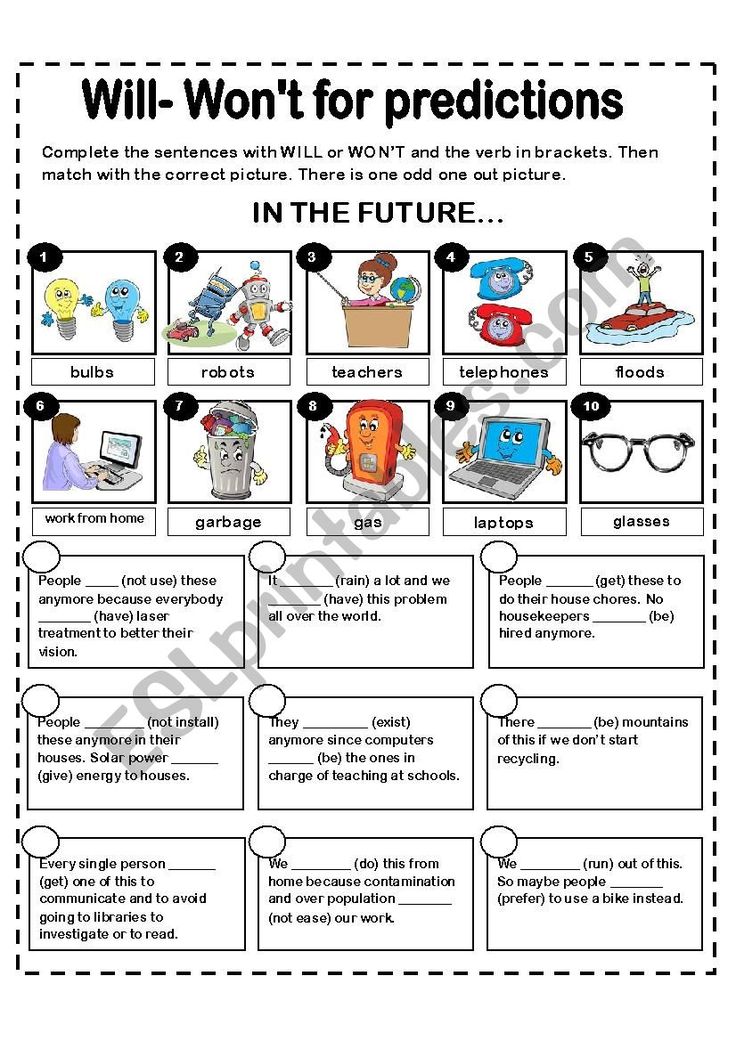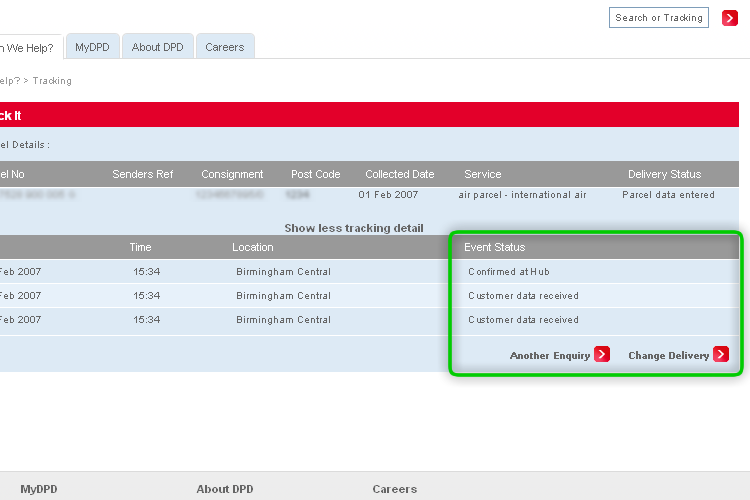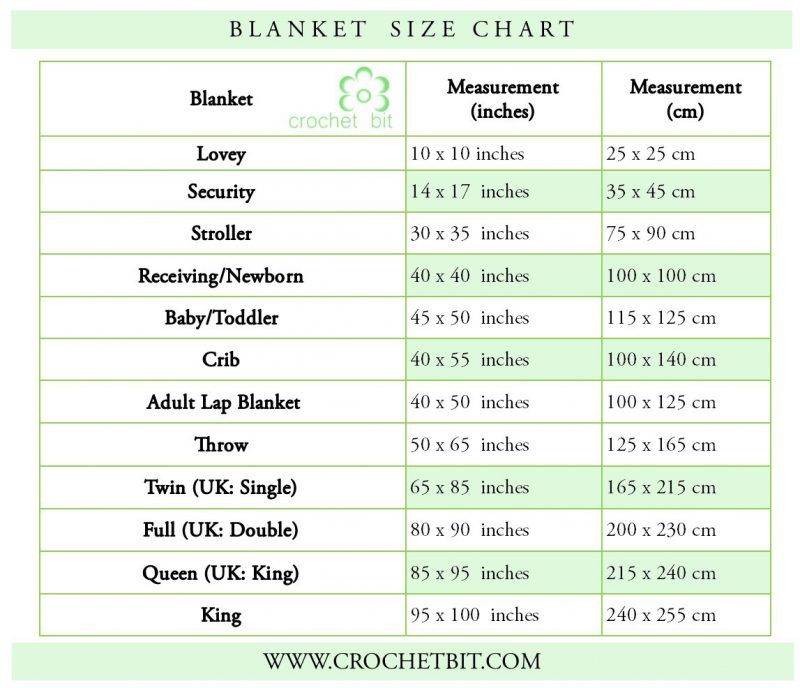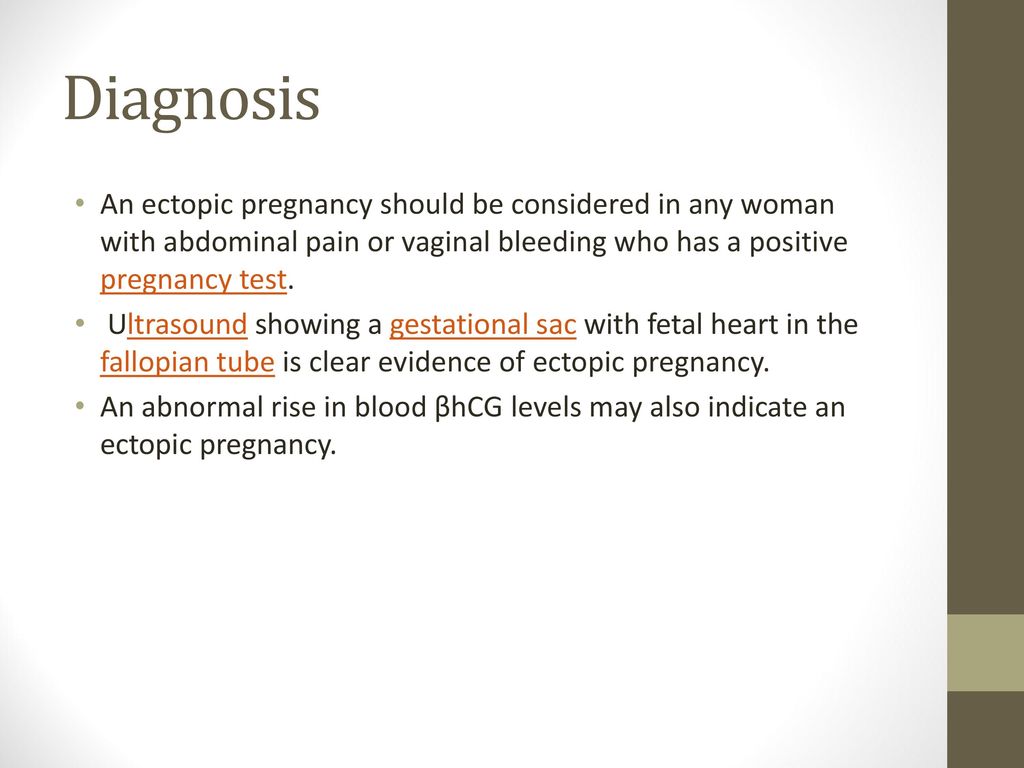Delivery date predictions
Your Due Date is Wrong. The Imperfect Science of Due Date Prediction.
Both of my daughters arrived “late” according to the dates in my charts. Both girls seemed to mock the very concept of a “Due Date”. The little one, especially—she showed up a mere 30 minutes before my scheduled induction, 11 days after the day she was clinically expected to arrive.
I am not alone. The chance of delivering exactly on your magically assigned date is rare — only 5% of women will deliver on their Estimated Due Date.
So there’s a pretty good chance that your due date is wrong too.
But why are we so bad at accurately predicting due dates?
Assigning a due date takes several factors into account: last menstrual period as a proxy for the assumed day of ovulation, size of the baby at various stages (assessed via ultrasound).
A study compared these traditional methods in the cases of nearly 20,000 births. The researchers found that precise prediction is basically impossible. Regardless of which method they used to determine estimated Date of Birth, the actual Date of Birth showed considerable variation between babies (up to 2 weeks before, and 2 weeks after). Even with the earliest ultrasound, between 11–14 weeks when the fetus is lime-sized, the size of said lime appears to vary just enough to screw up any degree of predictability.
“Expectant mothers should be informed that there is only a 35% chance that they will actually go into labor during the week of their Estimated Date of Birth” – Khambalia, et al. 2001
Forget those fancy tools of due date prediction, a 2015 research study proved out what we’ve always known – babies don’t play by our rules.
In this study, researchers found that gestation lengths for normal pregnancies can vary up to 5 weeks. FIVE WEEKS! The researchers in this study knew exactly which day the little egg popped out of the ovary and started its journey to becoming a human. No guessing on last period or assuming ovulation date. This method is precision timing at its best.
This method is precision timing at its best.
Gestation lengths for normal pregnancies can vary up to 5 weeks
Five weeks is obviously a huge window. This study suggests that human gestation may be a bit more complicated than previously expected. Even after the sperm race concludes and genetic material combines, the uterus-bound ball of cells does not follow a consistent trajectory. It can take the fast, direct route or the slow, scenic route before it nuzzles its way into the uterine lining and sets up shop. Even crazier, the environment that mom provides for the little ball of cells can also influence timing. All these little influences along the way then lead to a shifted developmental timeline that throws off our current methods of predicting due dates.
Essentially, each tiny human can be fast out of the gate or slow. Fast embryos are born sooner.
“The trajectory for the timing of delivery may be set in early pregnancy” — Jukic, et al.
2013
Genetic factors for your
real Due DateComparisons of mom and dad’s birth record vs. their babies birth date also suggest that genetics play an important role in due date prediction. Simply put, faster-growing babies hit escape trigger earlier than slower growing babies.
But is the trigger baby size? or size of the remaining space in the uterus?
Seems like it’s the latter: babies squished into tight spaces may pull the trigger earlier! Short moms (>5’3”) deliver their babies almost five days earlier than their tall mom counterparts (>5’6”). But it’s not all genetic effects on baby size – tall or short dads had zero influence on when baby arrived. And babies of tall moms tend to come post due date, suggesting that the extra space may stall baby escape plans. Biologically speaking, uterine stretch may have something to do with when and how the body starts the labor process.
Essentially, each tiny human can be fast out of the gate or slow.
Fast embryos are born sooner.
Do Due Dates even matter?
We, as mothers and fathers, and anyone who has ever hounded a pregnant woman with the “when are you due?” question expect and crave predictability. We want a due “date”. But beyond satisfying the curious neighbor or aunt, there are serious implications for placing too much emphasis on a specific date.
If we don’t really know what the actual gestation length should be for each specific baby, how do we know who is early, who is late, and who is right on time?
Due dates serve an important clinical purpose—they provide information on when to intervene, speed things along, and get that baby out.
This may happen too early, before baby is ready. That is bad.
Or, it may happen too late. That is really bad.
One study found that baby girls have later estimated due dates than they probably should. As a result, girls have a higher risk of going post-term with serious consequences. Emphasizing the need to balance consequences of unnecessary early intervention with the possibility of intervening too late, the researchers on that study suggest a simple solution. They advise keeping a close eye on pregnancies with a wider window consideration of “post-date” and allow mom to have a strong voice in the decision about when to intervene.
They advise keeping a close eye on pregnancies with a wider window consideration of “post-date” and allow mom to have a strong voice in the decision about when to intervene.
They suggest putting all the cards on the table:
“Let women make an informed decision about which management they prefer… fully inform mothers about the uncertainties of pregnancy dating.” — Skalkido, et al. 2010
It doesn’t clear up the uncertainty but including women in the decision making process with full transparency about the BS of due date calculation, seems like a step in the right direction.
YOUR PREGNANCY SMARTS. Delivered.
Sign up for the Preg U Newsletter!
Pregnancy Due Date Calculator | BabyCenter
Calculation method
When did your last period start?
When did your last period start?mm-dd-yyyy
Cycle length
BabyCenter's Due Date Calculator
Use our pregnancy due date calculator by plugging in either the date of your last menstrual cycle or the date you know you conceived. The calculator will do the rest.
The calculator will do the rest.
How is my due date calculated?
There are several ways your due date is determined. If you happen to know the day you conceived, you can count 38 weeks from that day to find your due date. (Human gestation takes about 38 weeks.)
But very few expectant moms know exactly when they conceived. Even if you only had sex once during your fertile period, you wouldn't conceive on that day unless you happen to be ovulating. Sperm can live for up to five days inside your fallopian tubes. So, it could be up to five days after you have sex that you release an egg (ovulate) and it gets fertilized by a waiting sperm. That's the day you conceive.
So, without knowing the day of conception, how does anyone determine a due date?
First day of your last period
The most common way to calculate your pregnancy due date is by counting 40 weeks from the first day of your last menstrual period (LMP). And that's how most healthcare providers do it.
If your menstrual cycle length is the average length (28-day cycle), your menstrual cycle probably started about two weeks before you conceived. This explains why pregnancies are said to last 40 weeks instead of 38 weeks.
This method doesn't take into account how long your menstrual cycle actually is or when you think you might have conceived. But generally speaking, women typically ovulate about two weeks after their menstrual cycle starts. And women are more likely to know when their last period started than the day they ovulated.
Conception date
If you do happen to know precisely when you conceived – say, if you were using an ovulation predictor kit or tracking your ovulation symptoms – you can calculate your pregnancy due date based on your conception date. Just choose that calculation method from the pulldown above and put in your date.
Note: Again, you don't necessarily conceive on the day you have sex.
IVF transfer date
If you conceived through IVF, you can calculate your due date using your IVF transfer date. If you had a Day 5 embryo transfer, count 261 days from your transfer date. If you had a Day 3 embryo transfer, count 263 days.
If you had a Day 5 embryo transfer, count 261 days from your transfer date. If you had a Day 3 embryo transfer, count 263 days.
Can my due date change?
Your healthcare provider might revise your due date if your baby is measured during a first trimester ultrasound scan and found to be much bigger or smaller than expected for gestational age. This is more likely to happen if you have an irregular menstrual cycle length that makes it hard to pinpoint the date of conception.
Your healthcare provider will measure your baby during that ultrasound exam to figure out how far along your baby is and then provide you with a new due date.
What if I already know my due date?
If you already know your due date, you can use this calculator to see your pregnancy timeline. It will tell you when you'll hit various milestones, and when you may be due for prenatal tests and prenatal visits. You'll also find what your baby's sign and birthstone will probably be and which famous people were born on your due date.
How likely am I to give birth on my due date?
Of course, a due date calculation is always approximate, whether it's from our tool or from your doctor or midwife. Only 1 in 20 women delivers on her due date. You're just as likely to go into labor any day during the two weeks before or after.
Want more information about how the weeks, months, and trimesters of pregnancy are counted? See our pregnancy timing chart.
How soon can I take a pregnancy test?
With all this talk about pregnancy due dates, you may be wondering when you can take a pregnancy test. To ensure you get the most accurate reading, it's best to wait a few days after your missed period to take a pregnancy test.
At-home urine tests measure the amount of hCG (human chorionic gonadotropin) present in your body. If you take a pregnancy test before you miss your period, you may not get an accurate result, despite what some tests advertise.
If you're getting a blood test in your provider's office, you may get results sooner. These tests also measure the amount of hCG in your bloodstream, but they're more sensitive than at-home urine tests. Blood tests may be able to detect pregnancy six to eight days after ovulation.
These tests also measure the amount of hCG in your bloodstream, but they're more sensitive than at-home urine tests. Blood tests may be able to detect pregnancy six to eight days after ovulation.
Read more:
- Your pregnancy, week by week
- Your first trimester pregnancy checklist
- Pregnancy Weight Gain Calculator
- Ovulation Calculator
- See all tools
BabyCenter Staff
Content that appears under this byline was created by members of the BabyCenter Editorial team.
Advertisement | page continues below
which predictions came true and which did not / Sudo Null IT News
Every year, experts give predictions about where e-com will go. For example, in 2015 they saw the future of e-commerce in virtual reality and bet on Big Data.
We found several interesting forecasts on Habré and assessed which of them became reality and which remained fiction.
Fulfilled: Same Day Delivery
Trend : Same Day Delivery is the next evolutionary step in logistics.
In 2014, McKinsey & Company announced that fast shipping would become a hot trend in e-commerce. Then Amazon delivered goods in 3 days and took a lot of money for it - from 6 to 10 dollars. Amazon Prime subscribers can now receive orders on the same day.
Fast delivery made possible by artificial intelligence in logistics. He is able to distribute hundreds of thousands of orders in a few minutes and takes into account road repairs, traffic jams and possible path combinations. If three deliveries are made in the name of one person, but in different stores, the algorithm will combine them into a single order.
According to the analytical agency Data Insight, in the first quarter of 2021, 56 million orders were delivered in Russia on the same day.
Data as of the beginning of 2021. Now SberMarket is actively developing delivery in 20 minutes. Source: Data Insight Shoppers receive flowers and groceries the fastest, with 81% of florists and 62% of grocery stores delivering within hours, and 95% of those two segments with same-day delivery. Delivery of other goods is on average much slower.
Delivery of other goods is on average much slower.
Realized: Big Data personalization
Trend : Stores will collect and analyze Big Data about their customers.
In 2015, DataBase put this trend in the spotlight. Then only 17% of global companies used big data. In three years, this figure rose to 53%.
In three years, more companies began to use Big Data. In 2015, they were 17%, in 2016 - 43%, in 2017 - 53%. Source: Dresner Advisory ServicesA survey of Fortune 1000 CEOs found that in 2021, 99% of companies have invested in data. The survey included American Express, Bank of America, JP Morgan Chase, Mastercard, McDonalds, Sanofi, Starbucks, VISA, and Walmart.
At the same time, not all companies use Big Data to the fullest:
-
24% have created a department that deals only with data;
-
24% have developed a data culture;
-
39% reported that they are driven by data to grow their business.

In Russia, the big data market is only developing. At SberMarket, the analytics department collects data on customer behavior at all stages of placing an order. Shoppers receive personalized recommendations for items to look at and what else to add to their shopping cart.
For people who have just joined SberMarket, we offer regional trends, but the more purchases and actions are made on the platform, the more unique and individual the recommendations become. We train models on millions of orders and take into account your favorite product categories, brands, discounts, etc. in individual offers. Models are constantly retrained on fresh data and only get better.
Realized: voice assistants
Trend : Voice platforms will play an increasing role in e-commerce. In 2017, Siri father Doug Kittlaus believed that in the future, people would order things and groceries with their voice.
In 2018, consulting company PricewaterhouseCoopers found that 65% of people aged 25 to 49 talk to voice devices at least once a day.
Voicebot Research found that in 2018, 20.5 million US adults used their voice to buy a product at least once. In 2021, this figure rose to 45.2 million.
In 2021, 45.2 million US consumers bought goods using voice platforms. Source: Voicebot ResearchMore than 50 million Russians use voice assistants at least once a month, but still don't buy with them. The Just AI survey shows that in Russia, voice platforms are most often used to search the Internet, navigate to find out the weather forecast, make calls, set an alarm or turn on music.
Almost a reality: drone delivery
Trend : In four or five years, drones will be able to deliver small packages directly to your home.
Amazon . In 2013, Jeff Bezos promised drone delivery and announced the launch of the Prime Air project. In 2016, the company conducted test flights in the UK, but the project closed in August last year.
In 2016, the company conducted test flights in the UK, but the project closed in August last year.
The project failed due to constant changes in the work environment and a series of layoffs. The senior managers who have worked at Prime Air since its launch have left the project. They were replaced by Amazon managers who specialized in logistics or warehouse operations and did not know the technical details of the project.
In the US, the project continues to operate. Now Amazon is looking for 163 specialists for the American division.
Russian Post . In 2018, Russian Post tried to launch its drone, but it crashed on takeoff. Then the manufacturer said that the drone suddenly turned off all the electronic equipment.
Three years later, in 2021, Russian Post announced the successful testing of another drone. He covered more than 100 kilometers in a remote area. By the end of 2024, the company plans to launch drone delivery in the Yamalo-Nenets Autonomous Okrug along 10 routes.
Google . In 2021, Google launched delivery drones: the Wing service brings orders to residents of the Australian suburbs. The package arrives in less than 10 minutes, and Wing's record is 2 minutes 47 seconds from order to arrival. The company is now gearing up to launch the first drone grocery delivery service in the US.
The drone flies to the delivery point, descends to a height of 7 meters, and then lowers the order on a cable. Source: WingFailed: Data Collection with Smart Gadgets
Trend : The spread of smartwatches, glasses and fitness bands will allow sellers to get more data about the buyer.
In 2014, PricewaterhouseCoopers announced that gadgets would be able to offer personalized promotions and discounts to consumers based on where the person is located.
Or choose clothes that fit your figure. To do this, the smart device must not only collect health and training data, but also measure hundreds of other parameters of the human body.
According to Statista, the number of wearable devices increased from 325 million to 722 million between 2016 and 2019. The number of smart gadgets is predicted to reach one billion in 2022. But so far, they have not come to e-commerce and are focused on the field of health and fitness.
In 2022, the number of wearable devices in the world will reach 1 billion. Source: StatistaFailed: virtual reality in shopping
Trend : It will be possible to buy online using VR.
In 2016, Alibaba Group Holdings fantasized that there would be large virtual malls where you could walk around and inspect goods and buy with gestures.
But that didn't happen: VR headsets and goggles are expensive, few people have them, and VR app development is difficult. Therefore, e-commerce switched to augmented reality.
According to the latest data, by 2023 there will be 1.7 billion users of mobile augmented reality worldwide. This is 7.5 times more than in 2015.
Here are some examples of AR in e-commerce:
-
IKEA can try on anything at home with an AR-coded catalog. For example, you can place furniture in the environment and see how it will look in the room.
-
L'Oreal shows in its application how the hair will look after dyeing. Lamoda has introduced the possibility of virtual shoe fitting.
-
Nike went one step further and added a feature to its app that uses augmented reality to determine the size of a customer's foot when choosing a shoe.
What's next for e-commerce
We have sorted out the successful and failed predictions and now we want to make our own. Let's see what happens in 5 years:
-
More companies will implement express delivery in an hour or less.
-
Warehouses will become fully robotic using AI technologies.
-
Artificial intelligence algorithms will gradually replace cashiers, and shops without attendants will appear.
-
In Russia, an unmanned taxi will deliver orders.
-
Celebrities will start promoting brands in virtual and augmented reality.
-
E-com sites will become a full-fledged marketing tool along with social networks.
The last two points are already coming true. To promote the seventh season of Fortnite, the creators of the game held an Ariana Grande concert in the game universe.
The same Ariana Grande concert for FortniteBuyers are already actively looking for products not in search engines, but directly in marketplaces. Therefore, e-com platforms will become an effective advertising channel for advertisers. The main thing here is the ability to track conversions to a purchase.
If you want to contribute to the development of e-commerce, join our team: we have vacancies for developers on Golang and Ruby on Rails, and if you are more interested in smart algorithms and analytics, then Data Engineering positions are open.
We started social networks with news and announcements from the Tech team. If you want to know what's under the hood of e-commerce development, follow us where it's most convenient for you: Telegram , VK .
Problems with the delivery of goods from China in 2023 will begin a month earlier
China will start celebrating the New Year on January 21, and this holiday will delay parcels in transit by 2-4 weeks / Aly Song / Reuters
The traditional winter problem with the delivery of parcels from China is postponed in 2023 from February to January due to the early celebration of the Chinese New Year, which fell on January 21, interlocutors in the logistics and operator companies ModernWay, FM Logistic, Sota Logistic told Vedomosti and Novelco.
In 2022, this holiday was celebrated on February 1, in 2021 - on February 5, in 2020 - on February 12. As a rule, during the holidays in the PRC, railway stations, customs terminals, ports and border crossings operate to a limited extent.
Logistics specialists record an increased demand for the transportation of goods by rail from China: now places are being sold for next year. Closer to the onset of the holidays, the load on infrastructure will increase, and traffic jams in ports and at border crossings will increase, they believe.
According to Sergei Shmigovsky, Deputy General Director of the operator company ModernWay, now the delivery time of goods from the moment the container is loaded from the sender by rail from China to Russia is up to 65 days. If transported by sea with transshipment to the railway in the ports of the Far East - up to 85 days. Waiting for a ship in the roadstead, according to him, can be up to 20 days, loading on a train - up to 20 days.
At the beginning of November, the delivery time for goods from the port of Shanghai via Vladivostok to Moscow was about 45 days, provided that a carrier with the least waiting time on the roads and a higher cost was chosen. The time of cargo delivery along the same route when choosing the budget option was at the level of 50–60 days or more. Direct container trains from China to Moscow took about 50 days on average.
Sea freight has become the most reliable, safe and predictable method of delivery from China, says Grigory Grigoriev, CEO of Novelco. Previously, it was rail transport. “The high density of holidays will certainly have an impact on logistics: those who do not have time to take out their goods by the beginning of January, most likely, will not be able to do this until the first days of February,” Grigoriev said.
At the end of the holidays (February 9, 2023), not all companies will start working immediately, but only within a week, Shmigovsky adds. According to him, at the beginning of 2023, delivery times may increase from two weeks to four. Increased demand provokes an increase in prices: in January 2023, logistics tariffs are expected to increase by 20–25%, says Kirill Latinsky, commercial director of Sota Logistic.
According to the head of FM Logistic's multimodal transportation in Russia, Dmitry Sukhoversha, the average price level at the beginning of December for direct rail traffic from China to Moscow is about $10,000 per 40-foot container (FEU). Multimodal transportation (by sea and rail) will cost $10,500 per 1 FEU, by road - about $20,000 for a heavy cargo, air freight - $10/kg (charged for each individual request).
Shmigovsky says that if the consignees did not plan for the “layering” of holidays when planning purchases or planned shipping dates for these days, then due to a gap in supplies, the market may experience a shortage of products, especially those that are highly dependent on the production cycle of goods. “As a result, sellers may miss the start of the season and, as a result, lose profits,” he stressed.
According to an Ozon representative, the company is ready for the high season and does not include extended delivery times. The risks include only delays for several days at customs terminals in the Russian Federation when processing imports during the peak season, he says. “During the Chinese New Year, due to interruptions in the work of local carriers, we expect an increase in delivery times by an average of 10 days,” the source said.
A representative of the Delo Group of Companies says that if a gap in the supply of Chinese products does occur, a shortage may arise for those goods, the import of which increases in the period before the New Year holidays. These are, for example, spare parts for cars, machine parts, consumer electronics and plastic products, he specifies.
Independent industrial expert Maxim Shaposhnikov is sure that the rush demand will contribute to higher prices for the transportation of a wide range of goods due to overloaded orders from the Chinese side. “Most likely, we will talk about portable electronics and clothing. In order not to keep the shelves half empty, the sellers will increase prices, and stocks will be sold in March-April after the normalization of supplies,” he concluded.
In the context of a significant increase in pressure on logistics and the need to build new logistics schemes, the situation objectively has been and will be very difficult, says Mikhail Burmistrov, CEO of Infoline Analytics.












